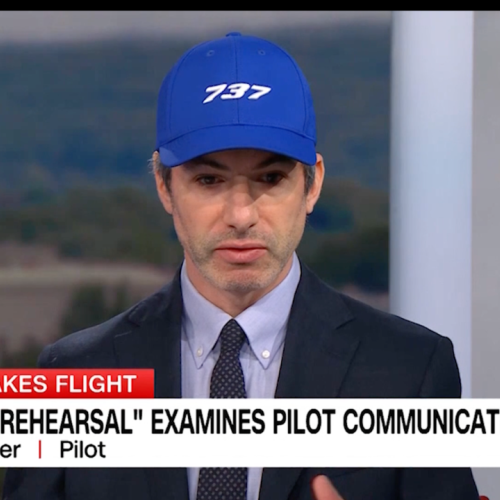Interviewing is a critical component of any investigation, requiring investigators to gather accurate and reliable information from victims, witnesses, and suspects. Unlike accusatory interrogations that seek quick confessions, investigative interviewing adopts an investigative mindset– treating the interview as an extension of the investigation itself. This mindset means the interviewer continuously links pieces of evidence, checks facts, and explores the broader context of the event while interviewing. In practice, an investigator-interviewer approaches each conversation open-mindedly, aiming to discover the truth of what happened rather than forcing a confession.
Adopting an Investigative Mindset in Interviews
Investigative mindset refers to a way of thinking that treats every interview as part of a fact-finding inquiry. Rather than accepting statements at face value, the interviewer critically evaluates and correlates them with other known information. Meaning any account given by the interviewee “should always be tested against what the interviewer already knows or what can be reasonably established”. The main purpose of gathering information in an interview is to “further the enquiry by establishing facts,”
This underscores the importance of effective planning in line with the whole investigation. In other words, the interviewer enters the room with certain hypotheses or knowledge (from evidence or prior interviews) and uses the interview to confirm, refine, or refute pieces of the puzzle.
An investigative mindset requires structured preparation and open-minded analysis. Practitioners describe five core principles that investigators should consistently apply (often called the pillars of the investigative mindset):
- Understanding the source of the material:Know the provenance and credibility of information or evidence being discussed.
- Planning and preparation:Define clear objectives for the interview, based on case facts and leads that need clarification. Premature conclusions are avoided; instead, the interviewer plans to probe various possibilities.
- Examination: During the interview, obtain the interviewee’s full account and examine it in detail. This corresponds to the “Account” phase in models like PEACE, involving clarifying points and challenging inconsistencies if needed. The interviewer adheres to the ABC approach – “Assume nothing, believe nothing, Challenge everything”when assessing the account’s veracity.
- Recording and collation:Accurately record the information and organize it with other evidence. This ensures details from the interview can be compared against timelines, witness statements, forensic evidence, etc., for a comprehensive view.
- Evaluation:After the interview, assess the new information’s impact on the investigation. This includes reviewing whether interview goals were met and determining next steps or lines of inquiry.
Approaching interviews with this investigative attitude helps guard against biases and errors. It encourages the interviewer to remain objective and open-minded – willing to follow up on new clues revealed, rather than seeking only to confirm pre-existing suspicions. By maintaining an investigative mindset, interviewers have a better chance of uncovering the full story of an event, identifying discrepancies, and ultimately advancing the investigation based on facts rather than assumptions.
Linking Timelines, People, Actions and Locations
A key aspect of investigative thinking is the ability to link various elements of an event during the interview. Effective interviewers treat the conversation as a fact-finding mission to reconstruct what happened, who was involved, where it occured and why. They actively piece together details about the incident’s timeline, the individuals involved, the locations involved and the actions taken. For example, an interviewer might probe a suspect or witness to establish a clear chronology and then verify if each person’s account fits that timeline. By doing so, investigators can catch inconsistencies or gaps that need further probing.
In practice, investigators often break down an incident into components and use the interview to address each element systematically:
- Timeline of events: Establishing when and in what order key events occurred. Interviewers may ask subjects to recount the sequence of events or even draw a timeline of the incident to solidify the chronology. This helps ensure that the account is internally consistent timewise and can be cross-checked against other evidence (like phone records or CCTV timestamps).
- People involved: Identifying all individuals (suspects, witnesses, victims) and clarifying their roles and relationships. An investigative interviewer will cross-reference what one person says about another with known facts. If a suspect mentions being with Person X at a certain time, the interviewer notes that to later confirm with Person X’s statement or other data. Background research prior to the interview is crucial here – experts advise learning as much as possible about the interviewee and relevant players (through records, social media, etc.) so that the interviewer can ask informed questions.
- Locations of event: Identifying the scene and locations people were prior to the event and locations of significance after the event.
- Actions and events: Documenting in detail what happened. Rather than glossing over general statements, the interviewer drills down on specifics. One recommended tactic is to have the interviewee describe or even sketch the scene, which forces them to recall fine-grained details about objects, actions, and events. For instance, if a suspect says, “I drove to the warehouse,” the interviewer might follow up: How did you get there, what route did you take, what car were you driving, what did you do upon arrival?The goal is to obtain as much concrete detail as possible. Such details can later be checked (e.g. confirming the car’s presence on traffic cameras) and can reveal discrepancies if the story is fabricated. In one conversation management approach, the interviewer first lets the suspect give an uninterrupted account and then asks extensive follow-up questions about each detail (like the color of a mentioned car, its registration, who else was present) – the more detail obtained, the more opportunities to verify or refute parts of the story .
- Motivations and intent: Exploring the “why” behind actions. Investigative interviews can provide insight into what motivated the subject or other actors to behave in a certain way. By asking probing questions about decision-making and feelings (e.g. “What were you hoping would happen by doing that?”), interviewers attempt to uncover intent, which can distinguish between an accident and a deliberate crime or reveal if others might be pulling the strings. Understanding motive can also guide investigators to related evidence (for example, financial gain as a motive may prompt a search for bank records).
Linking these elements transforms an interview from a simple Q&A into a dynamic process of event reconstruction. As the subject provides information, a skilled interviewer is constantly comparing it with known facts and looking for points of convergence or conflict. Guidance from experts emphasizes “going beyond the face value” of statements – interviewers should identify which parts of the account can be independently verified and then use an investigative mindset to probe deeper into those areas. If an interviewee’s story leaves a gap in the timeline or an unexplained action, the interviewer recognizes that as a red flag or avenue for further questioning rather than ignoring it. This methodical linking of people, places, times, and motives during the interview helps build a coherent narrative of events (or expose where such a narrative is lacking). It effectively turns the interview into an extension of crime scene investigation – but instead of physical evidence, the interviewer is analyzing spoken evidence. By the end of a well-conducted investigative interview, the investigator should have a much clearer picture of the event’s overall puzzle, with any remaining missing pieces clearly identified for follow-up.
Strategic Use of Evidence in Interviews
One of the most powerful tools in investigative interviewing is the strategic use of evidence (SUE). Rather than simply confronting a suspect with all available evidence at once (or, conversely, holding it back entirely), skilled investigators plan how and whento introduce evidence during the interview to maximize honesty and information yield. The SUE technique, developed through empirical research in the 2000s, provides a framework for doing this effectively.
The core idea behind SUE is to leverage what the investigator already knows in a strategic manner. Interviewers often have pieces of evidence (documents, communications, forensic findings, witness statements, etc.) before an interview. Instead of revealing all of it upfront or using accusatory bluffs, the SUE approach involves withholding certain evidence initiallyto encourage the subject to speak freely and then presenting evidence at tactically chosen moments to verify or challenge the account. This method yields several benefits:
- It prevents the suspect from simply tailoring their story to the known evidence from the start.
- It can catch deceptive interviewees off-guard when a piece of evidence disproves a lie, thereby increasing the cues to deception that investigators can observe.
- It helps build a more detailed statement. By holding back evidence, the interviewer can first gather the subject’s uninfluenced narrative and later introduce evidence to fill gaps or confront inconsistencies.
Researchers have documented that a strategic evidence disclosure approach greatly improves interview outcomes. The SUE technique has a strong scientific foundation – over 20 studiessupport its effectiveness, and it is considered an “empirically established” method for eliciting the truth. Notably, investigators trained in SUE significantly outperform those who are untrained in terms of detecting deception and obtaining useful information. For example, in one study, detectives using SUE were able to detect deceptive statements with about 85% accuracy, versus ~56% for untrained interviewers. The key is that SUE-trained interviewers do not rely on guesswork or gut feeling; instead, they follow a structured strategy of evidence presentation.
Overall, the strategic use of evidence turns the interview into a carefully orchestrated dialogue grounded in facts. It aligns with investigative thinking by ensuring that evidence is not just a passive tool but an active element of interview strategy. Rather than a fishing expedition or a coercive showdown, the interview becomes a guided tour through the evidence – where the subject is given the chance to tell their story, and the evidence is used at strategic junctures to guide the subject toward the truth. This technique has been shown to not only increase detection of lies but also to elicit more detailed admissions and clarifications, as the interviewee realizes the interviewer is aware of the factual landscape. By using evidence wisely, investigators maintain control of the interview’s direction and keep it focused on verification and discovery of information, which is the essence of investigative interviewing.
In conclusion, investigative thinking is the backbone of effective investigative interviewing. Whether it’s a police detective, a fraud examiner, or a human rights investigator, the best practitioners treat interviews as a vital opportunity to advance the investigation. They meticulously prepare by understanding the case details, maintain an open-minded yet analytical stance during the conversation, and use techniques that weave evidence and inquiry together. By linking elements like timelines, people, actions, and motives, an interviewer can assemble a clearer picture of the event in question. By strategically using evidence and avoiding coercion, they elicit truthful information and preserve the integrity of the investigation. And by following established frameworks and principles, they ensure that each interview stands up to scrutiny and moves the case closer to resolution. The overarching theme from both research and practice is that non-coercive, well-planned interviews grounded in an investigative mindset are far more effective at finding the truth than old-school grilling for confessions. In sum, integrating investigative thinking into interviewing not only improves outcomes (more information, fewer errors), but also aligns with ethical standards – ultimately leading to more just and reliable results in investigations.


